Animator Q&A: Animation School and Fashion Drawing
Hello! Here’s the first in a series of Q&A responses. I hope to answer and demystify things on your mind about drawing and animation. I also hope to help out by giving insight into the Animation Industry or the art world in general.
The bulk of my career has been an Assistant Director, Animator and Character Layout Artist on The Simpsons. I have also Directed on Randy Cunningham: 9th Grade Ninja for Disney XD as well as Storyboard work on Family Guy and at Nickelodeon. I have been seriously drawing since I was 12 and have always appreciated learning and helping others learn. When I would come across something that improved my drawing, I’d always want to show others “Hey, look what I just found!” Teaching is like show and tell to me. I am always very excited to let someone in on something that could catapult their work to a new level.
Let’s get started with a pretty broad question from Lee W. I wanted to cover them all because I thought a lot of people out there would be wondering the same things. It’s also a good place to start the journey.
- What would be the best advice for one day working as an animator or director at Disney, or any major studio?
- What’s the best path to take to eventually work in the animation industry?
- Did you go to art school? In your view, what are the best schools out there for animation right now?
- What advice would you give someone who was preparing their portfolio for college?
Feel free to answer all of them, or none of them.
Thanks,
Lee
———————————————————————————–
What would be the best advice for one day working as an animator or director at Disney, or any major studio?
It’s hard to say what the best advice is, because everyone has their own path and what works for some people may not work for others. I will start with a quote from Disney Artist Chris Oatley “Do great work and be great to work with.” For the most part, all any production wants is someone to come in, sit down and knock it out of the park. Whatever aspect of the craft you are focusing on, know it inside and out. Focus your energy on your strengths and be able to at least compensate for your weaknesses.
Draw your butt off. Draw, draw, draw and then draw some more. Find a good class that you feel comfortable in as well as pushes you to learn and grow. There are many online courses through the internet available, such as mine at www.drawniversity.com or others with more of a full curriculum. Going to a full fledged Art School / University is great. You can get a solid classical foundation to build your skills on, but there are pitfalls. Make sure the school has the proper focus on what you want to accomplish and the Animation department understands what is being done and is needed for working in the industry TODAY. Also the cost of Art College these days can be astronomical, as much as Harvard Law School if not more. Read the Article “Don’t go to art school” at https://medium.com/i-m-h-o/138c5efd45e9.
All of the above are good for different reasons. The internet provides a wealth of information to glean from. At the same time it’s important to be around other artists and talk about art and drawing and animation and geek out about common interests. Some of these people will be life long friends as well as colleagues. And talking about creative stuff fuels your creativity.
Being great to work with is just as important. The people hiring you (directly or indirectly) are going to be sitting beside you and/or interacting with you 40 hours a week (or more). They will need to depend on you and hopefully enjoy your company. Aside from the normal portfolio submission process, the main questions that get thrown around are “How’s their stuff?” and “How are they to be around?”
Now, we artists are usually an odd lot. So, a wide range of personalities are welcome. But Animation is a very collaborative environment and being easy to get along with is important.
Somethings to think about are:
Communicate well with others. Taking direction well is most important. You’ll be given a lot of notes and you need to remember to do and understand them all. Being able to ask when you don’t understand something as well as contribute your own ideas is equally important as how well you draw, paint or animate. On the flip side of that – GIVING direction well is also key. Once you are put in charge because you have proven yourself, you then have to relay the information you want clearly and concisely to your crew. There are a lot of genius artists who can’t convey what they want before they see it and there a lot of pretty good artists that know how to get the best out of their crew to make a great product.
What’s the best path to take to eventually work in the animation industry?
There is no best path, everyone has their own. Some people apply for a particular job with their portfolio. Some people get an internship at a studio to learn how a production is done and make personal connections and relationships. Some people know people who help them out and give them the inside track. Check out www.animationinsider.com for a ton of interviews with animation industy professionals and read about how they got where they are today. There are a few great podcasts to listen to: www.animationpodcast.com has a bunch of great talks with some of the great Disney Animators. Over at http://animationguild.org/ The Animation Guild’s Blog, Steve Hulett has also started a number of interviews to listen to here: http://animationguildblog.blogspot.com/search/label/TAG%20Interview.
All in all there’s a lot of information out there. Find out about what you want to do, then start on the steps that are right for you.
Did you go to art school? In your view, what are the best schools out there for animation right now?
I went to University of the Arts (UARTS) in Philadelphia. It had a pretty solid Animation department and I got out of it what I put in. It was a very creative environment, with many fine arts majors and a performing arts school as well. This was before CG and the first Digital Ink & Paint film came out when I was in school there. It was Paper, video, film and actual cameras to film the animation. I bet the computer lab had a scanner, but we didn’t know anything about it.
Here’s a quick list of some schools out there.
- University of the Arts
- UCLA
- Sheridan College
- Gobelins
- Calarts (California Institute of the Arts)
- Pasadena Art center
- The Art Institutes
- Animation Mentor — An online school that seems to have everything you need to become a CG animator
Try going to www.animationinsider.com and type these schools into the search box. See what interviews pop up and what they have to say about going there. Shoot the Artist an email and ask them more about their experience there. Linkedin.com is also a good resource for that.
There are also a good number of trade schools and small independant schools that provide just as good as an education as an accredited university. Los Angeles has quite a few and the hub of the animation industry is there. The Gnomon Workshop and Concept Design Academy are a couple off the top of my head. The Animation Guild itself has classes that most people in the industry have taken at one point or another. A good thing about taking classes in Los Angeles is a lot of industry professionals are teaching those classes.
What advice would you give someone who was preparing their portfolio for college?
I’m not sure what the standards are today. But as always show your drawing ability in different subjects. Contact the different schools and ask what they want to see. Go to PORTFOLIOS DAYS that are held at the various schools.
Personally besides the specifics I mentioned, the best advice I can give you is have fun. Find what you like to do and what you like about it and focus in on that. Be able to do as much as you can but be the best at what you do best. It’s a real blessing to have the ability to create something from nothing. Work hard and you will find your way.
Next up are some drawings to help reader Amy with life drawing and how to handle the ruffles and frills of fashion:
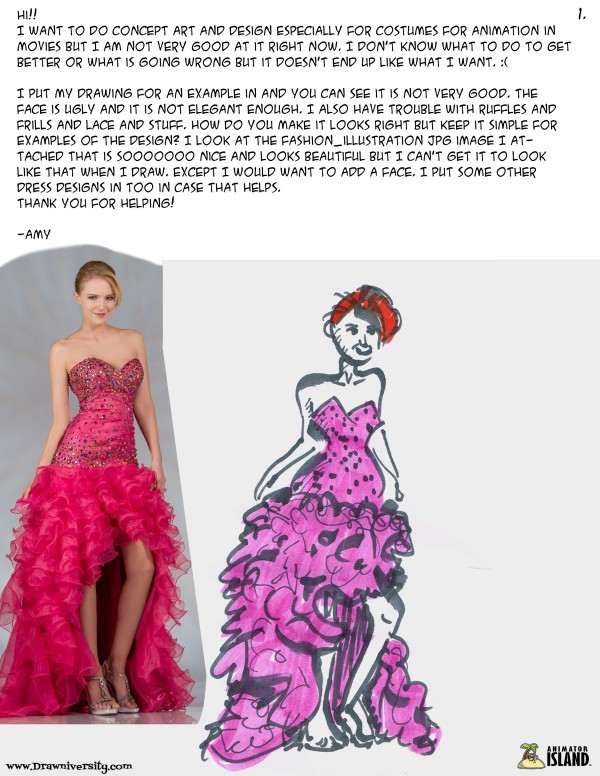
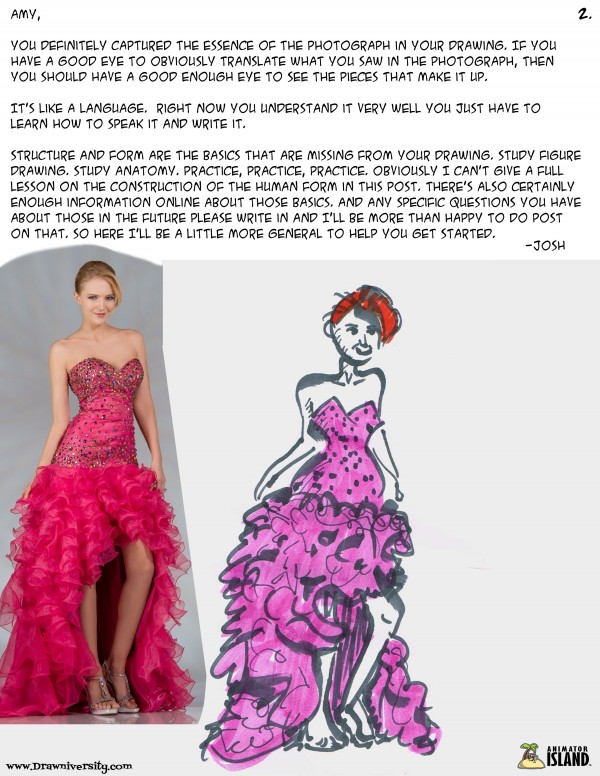
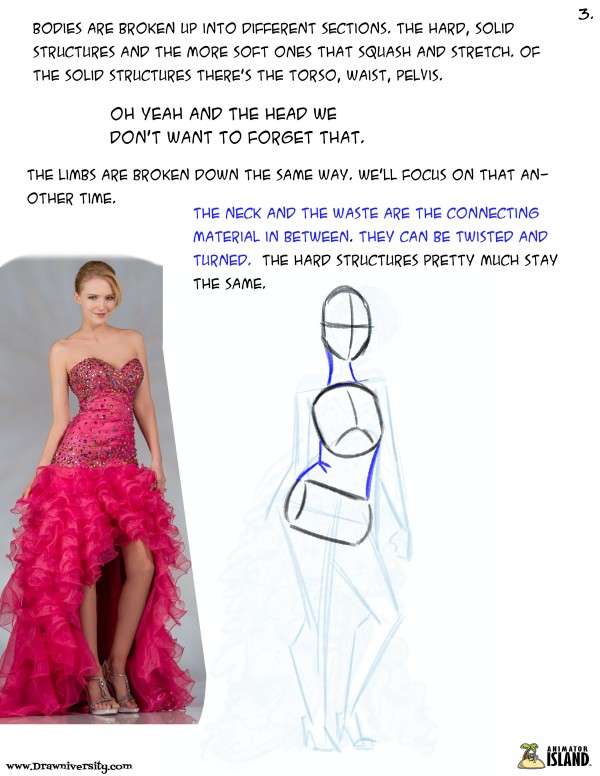

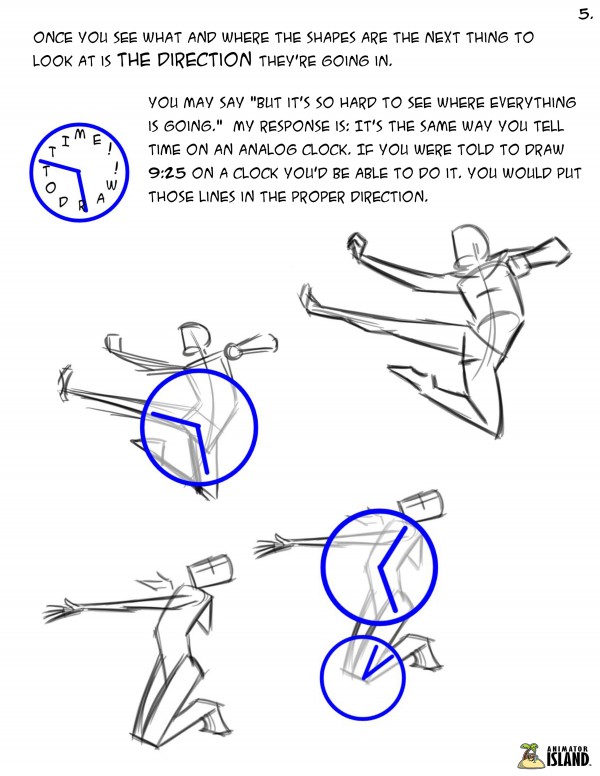
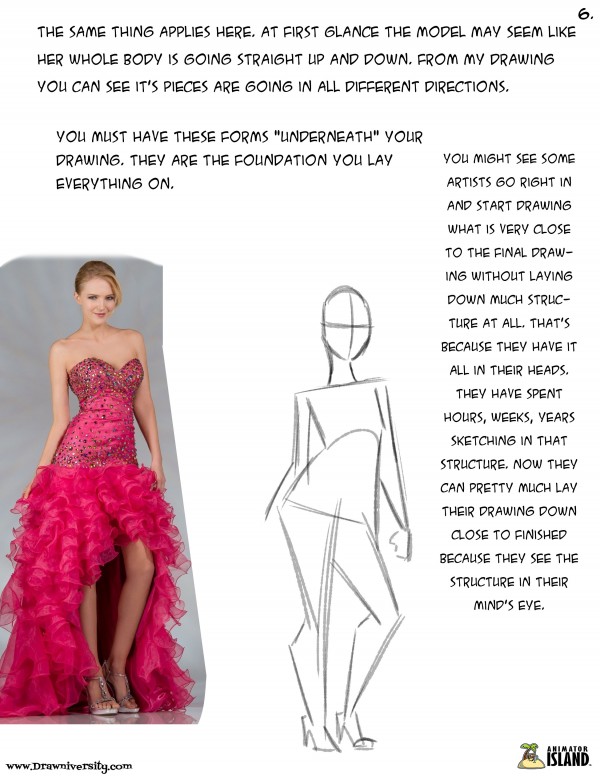
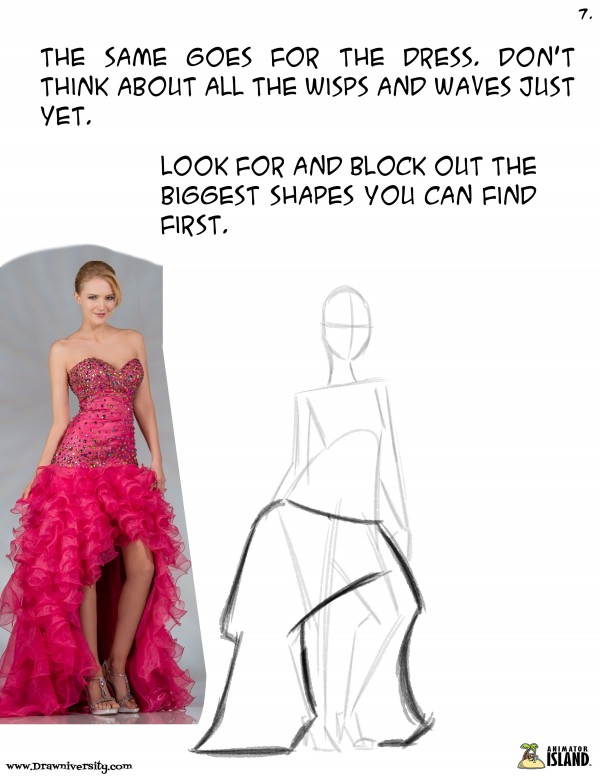

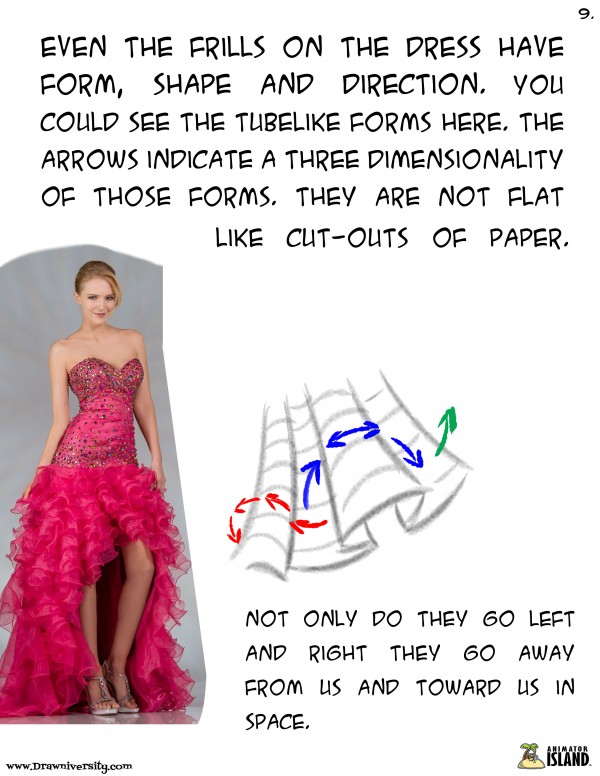

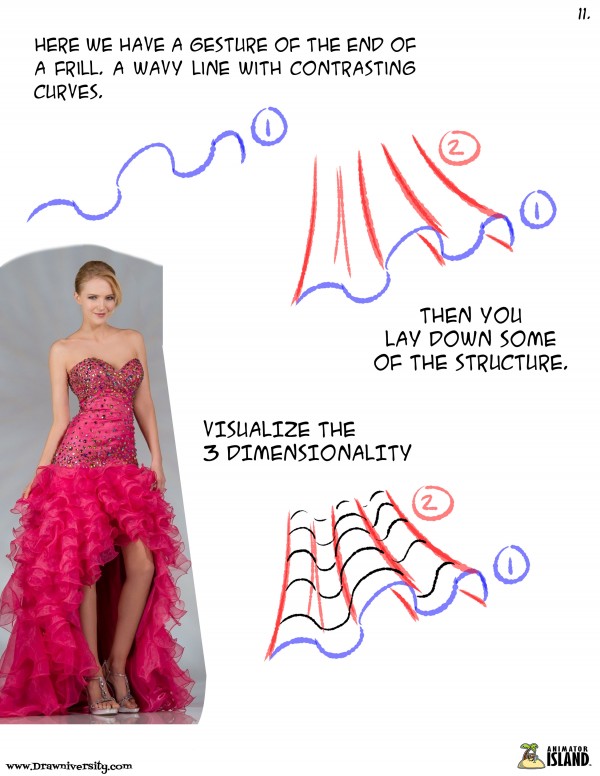
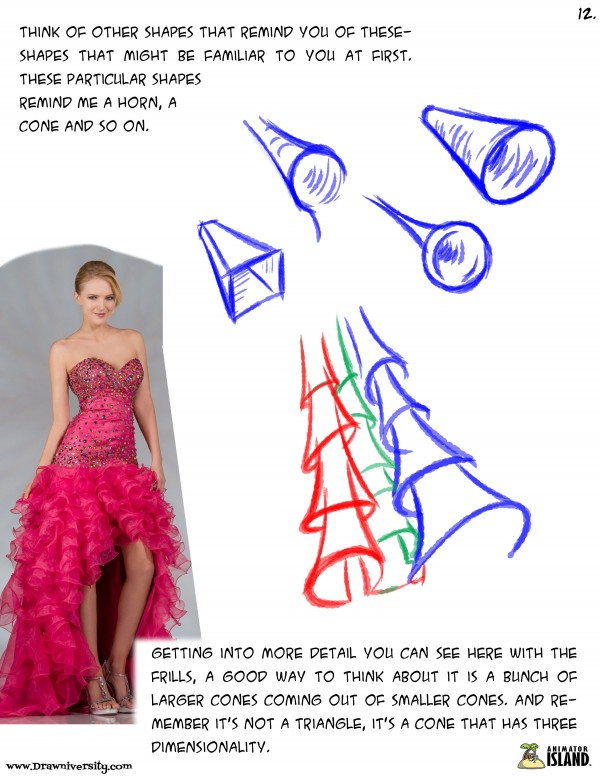
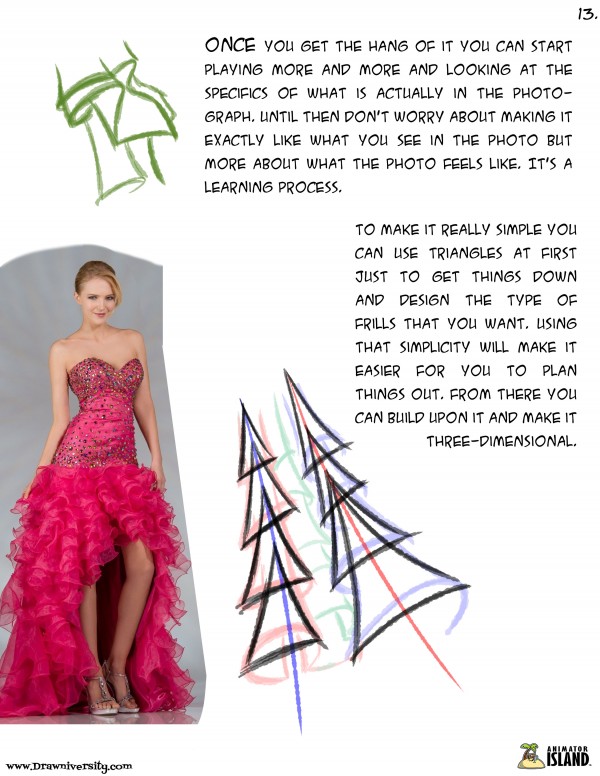
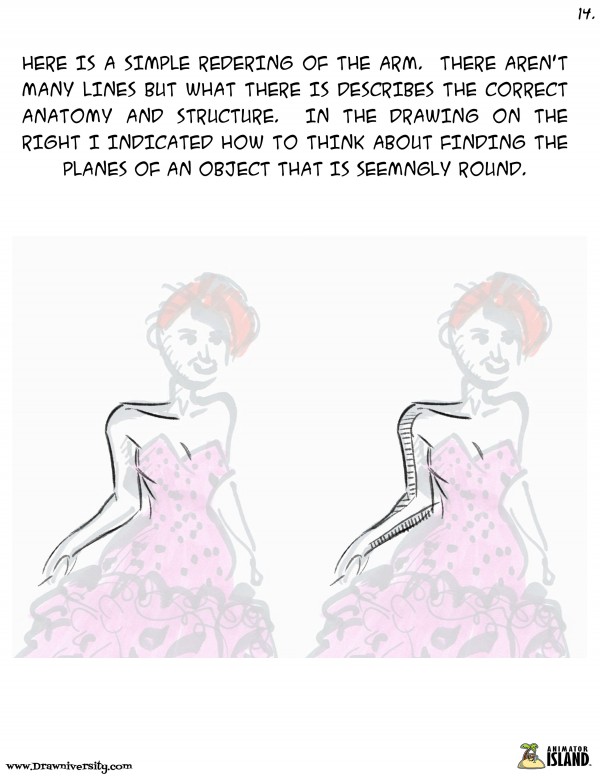
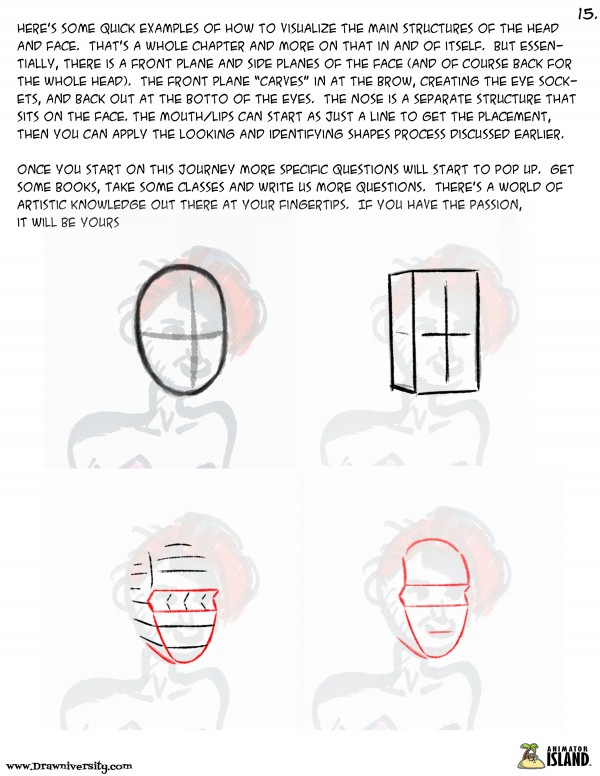

Next time I’ll be answering Sabina K.’s question:
“When I’m animating, the character gets smaller, even when all the keyframes are the same size, somehow I manage to draw every next inbetween smaller and the result is my character growing and shrinking on screen. Have any advice?”
Yes … yes I do. Next time!
Until then Keep Drawing!!!





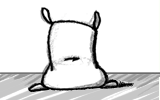
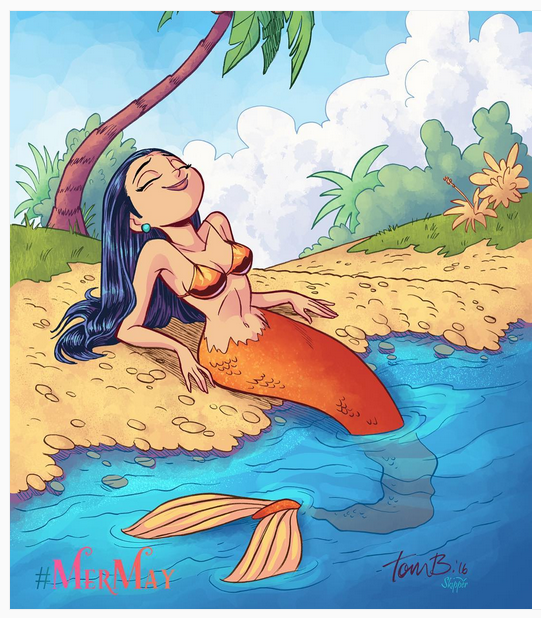
Very helpful! All the complicated actions and figures break down to the most simple shapes! 🙂 Looking forward to answer to my question and checking out great sites mentioned here!
Sabina,
I recorded the tutorial and have it cut into 10 in segments. I’ll be posting it soon!
–Josh
Ohhhhhhhh, cliff hanger!
That last one got me all excited!
Great article really good info! I also have trouble with fabric folds sometimes so I’m going to practice that!
I agree about going to a smaller school instead of a big one. I looked at CalArts and almost had a heart attack when I saw how much it costs! A smaller school can be just as good and now with good information online- like this!- you don’t need to pay so much. How would you ever make it back to pay off your loans! Animation doesn’t make millions. (Unless you are the CEO of Dreamworks.)
What happen to the next one? I was waiting for it but it did not come.
These are going to be an ongoing series, but not one after another in a row each week. So stay tuned, the next one will be here before you know it! 🙂
Also feel free to continue to ask questions if you have any, or send drawings along to be looked at.
Wonderful explanations on both fronts! I highly look forward to the next one thanks.
I am a 2D animation student just starting and I read about moving holds in 3D animation but because all the many tutorials now are 3D they talk about them and I don’t know if they are supposed to also be used in 2D? It is hard to find a lot of things online about that where it isn’t all in Maya or smthg. Do you just like ease in and out allot more?
Will you do more about clothes and how to draw them better? I would like to see more of that. Especially draping things and how you know where to put the lines of folds and stuff. I usually just put diagonals across the chest or whereever and it looks okay but I just do it no matter what the clothes look like, even if it doesn’t make a lot of sense. Or is it something you look at pictures to learn?
Excellent advice! I will be back to see the “next time” one too.
good new stuff here! awesome style very cool keep it up!
OMG I love that dress lol!
It isn’t everyday you see drawings that fantastic! I went and looked through all of them on your website. AMAZING! I wish I was that good!
I think art school is dumb. You can learn more on your own by getting some paint and painting! Just go do it and its cheaper to.
I came to your page and noticed you have a lot of good examples which is key to something like this. Nice job. Is there a place where the text in the images is not inside of the image? I have a hard time reading small text and usually increase the size of it but with images it doesn’t work. I didn’t know if it was perhaps written somewhere else too.
Hi Chloyan,
Sorry about that. WordPress has changed the way they display images. I thought the image would get larger when clicked but now they aren’t doing that. I see that JK has increased the size of the posted image now so it reads better. I’ll be sure to think about that in the future and/or also post the text separate from the pictures.
Hi, just wanted to say, I loved this Q and A. It was inspiring.
Keep on posting!
Saved as a favorite, I love your site!
New Year New QandA? **flutters eyelashes**
🙂